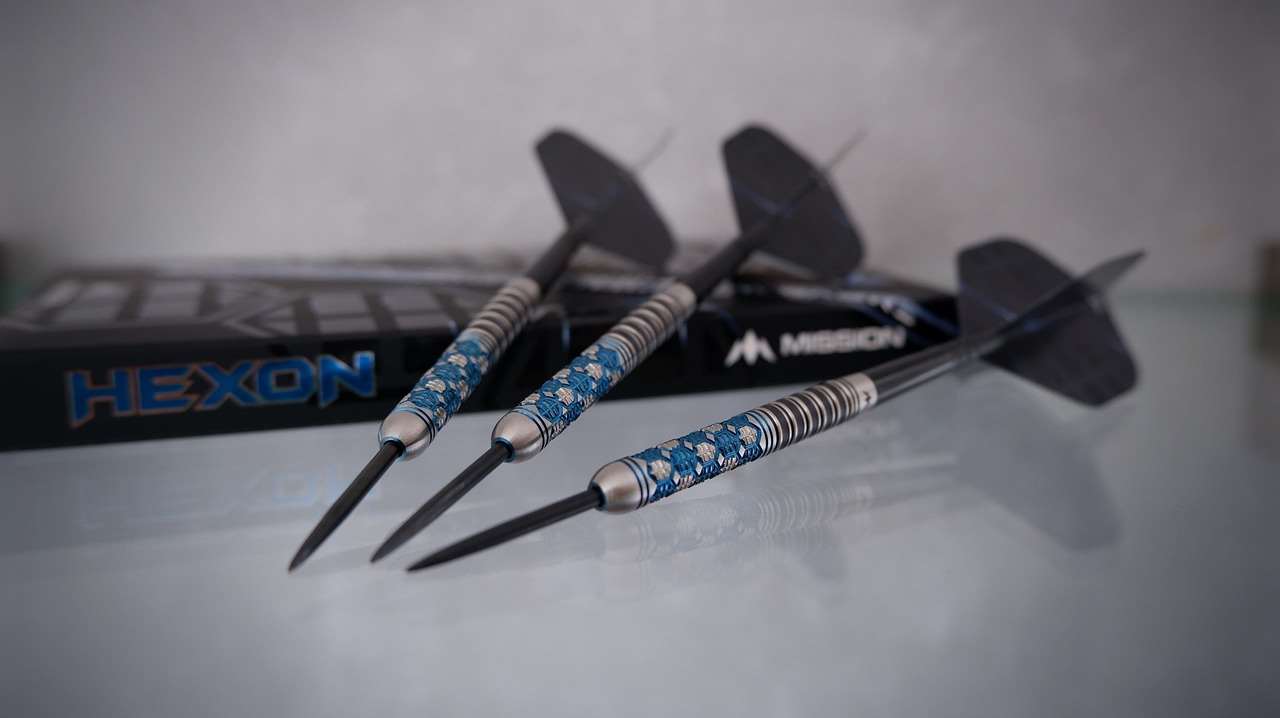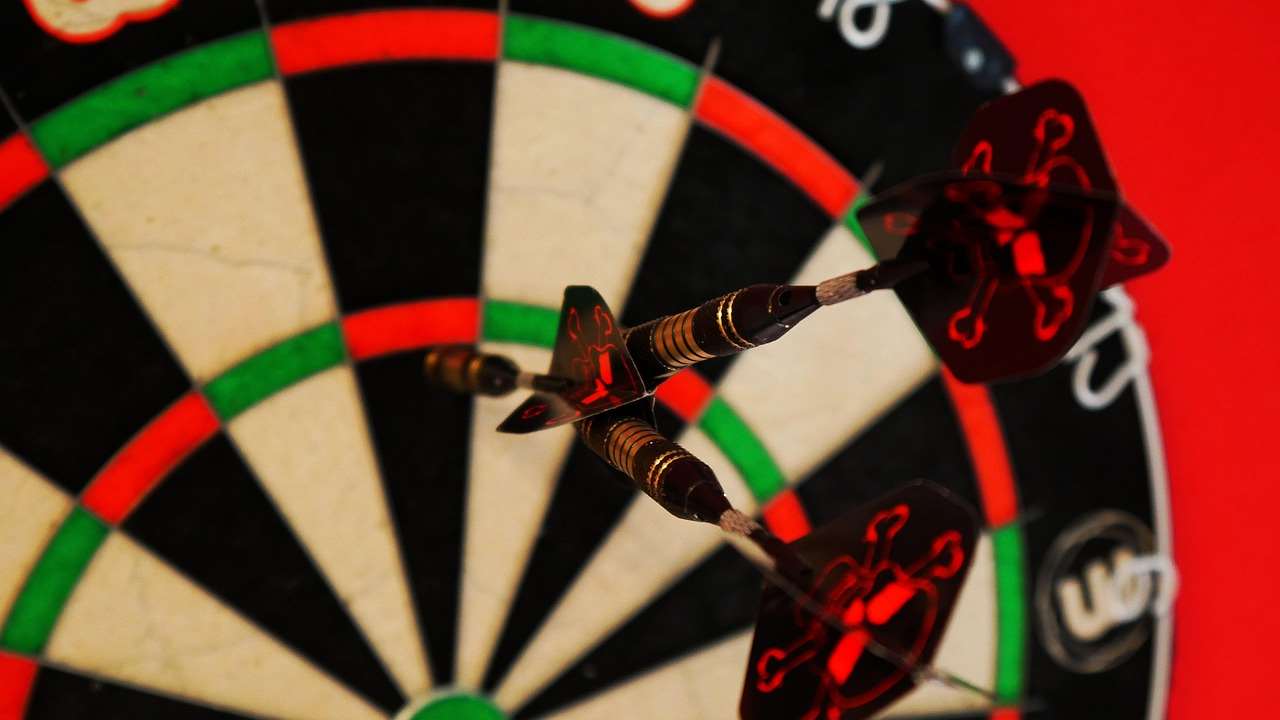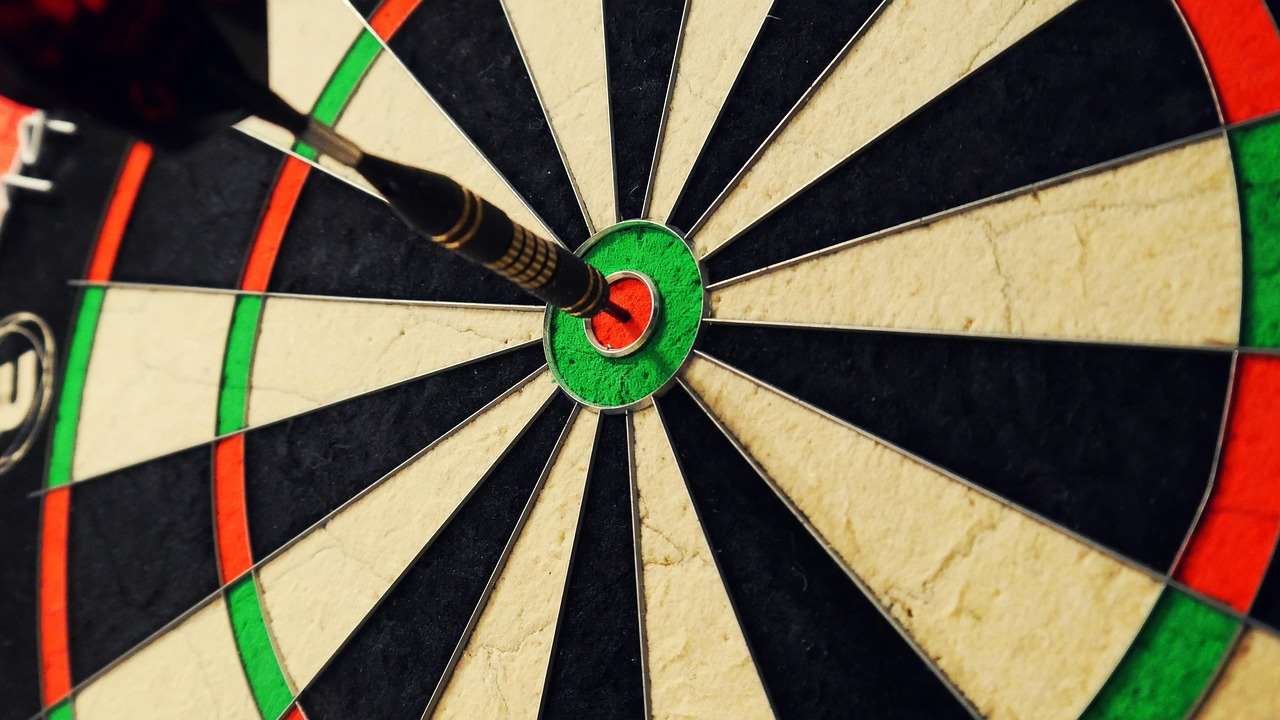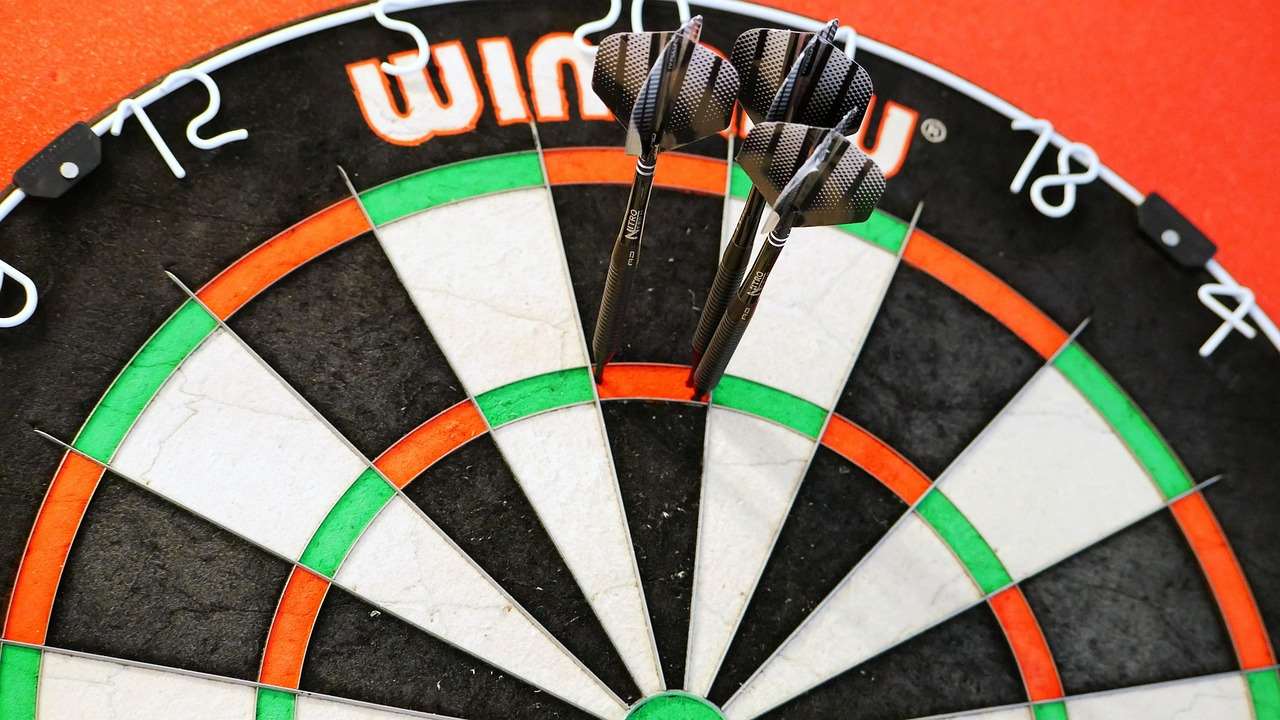Elevate your game and consistently hit those clutch doubles with advanced techniques designed specifically for Pub Darts For Experienced Players; this guide provides the strategies, practice routines, and mental fortitude necessary to dominate your local pub league. We’ll cover advanced throwing techniques, sophisticated strategy, mental game mastery, equipment optimization, and effective practice drills to transform your game from competent to consistently winning.
⚠️ Still Using Pen & Paper (or a Chalkboard)?! ⚠️
Step into the future! The Dart Counter App handles all the scoring, suggests checkouts, and tracks your stats automatically. It's easier than you think!
Try the Smart Dart Counter App FREE!Ready for an upgrade? Click above!
Taking Your Pub Darts Game to the Next Level
You’ve been playing pub darts for experienced players for a while. You know the rules, you can generally hit the board, and you’ve even had your share of victories. But now, you’re ready to take your game to the next level. This means moving beyond casual play and focusing on precision, consistency, and strategy. It’s about mastering the subtle nuances that separate the good players from the great ones.

Advanced Throwing Techniques
Beyond the basics of stance and grip, advanced players focus on developing a smooth, repeatable throwing motion. Here are key aspects to refine:
- Follow-Through: A complete and consistent follow-through is crucial for accuracy. Ensure your arm extends fully towards the target after releasing the dart. Pay close attention to maintaining a consistent wrist position.
- Release Point: Find your optimal release point. It’s the moment when you feel most in control of the dart’s trajectory. Practice releasing the dart at the same point in your throwing motion every time.
- Rhythm and Timing: Develop a consistent rhythm in your approach and throw. This helps to eliminate unnecessary movements and promotes a smoother, more controlled release.
Strategic Play for Pub Darts Domination
While accurate throwing is essential, strategic play is what truly separates the experienced player from the amateur. Smart decision-making can often overcome slight disadvantages in accuracy.
Choosing Your Shots Wisely
Don’t always go for the triple 20. Consider the following factors when selecting your targets:
- Remaining Score: Calculate the optimal checkout route based on your current score. Use online resources or darts calculators to identify the best combinations.
- Dart Grouping: Analyze where your previous darts landed. Adjust your aim to capitalize on tight groupings and maximize your scoring potential.
- Opponent’s Position: Be aware of your opponent’s remaining score and playing style. Adjust your strategy to put pressure on them and force mistakes. If you’re looking to experience more of the darts community, be sure to check out Darts Culture And Community Guide.

Setting Up Your Finishes
Proficient players understand the importance of setting up potential finishes. This involves strategically positioning your darts to leave yourself with favorable checkout opportunities.
- Leaving a Double: Aim to leave yourself with a double that you are comfortable hitting. Common choices include double 16, double 20, and double 8.
- Avoiding Busts: Be mindful of potential bust scores (scores that leave you with an impossible checkout). Plan your shots to avoid these situations.
- Strategic Bouncing: Sometimes, strategically bouncing a dart off a wire can be a smart move to set up a better finish.
The Mental Game of Pub Darts
Pub darts for experienced players isn’t just about physical skill; it’s also about mental toughness. Maintaining focus, managing pressure, and staying positive are crucial for consistent performance.
Developing Mental Resilience
Here are techniques to strengthen your mental game:
- Visualization: Before each match, visualize yourself hitting key targets and executing your strategy successfully.
- Positive Self-Talk: Replace negative thoughts with positive affirmations. Believe in your abilities and maintain a confident attitude.
- Focus on the Present: Don’t dwell on past mistakes or worry about future outcomes. Concentrate on each dart and throw to the best of your ability.
Dealing with Pressure
Pressure situations are inevitable in pub darts for experienced players. Learn to manage them effectively:
- Deep Breathing: Practice deep breathing exercises to calm your nerves and reduce anxiety.
- Pre-Shot Routine: Develop a consistent pre-shot routine to help you focus and stay in the moment.
- Embrace the Challenge: View pressure situations as opportunities to showcase your skills and grow as a player.
Optimizing Your Dart Equipment
Selecting the right dart equipment can significantly impact your performance. Experiment with different weights, shapes, and materials to find what works best for you.

Choosing the Right Darts
Consider these factors when choosing your darts:
- Weight: Experiment with different dart weights to find what feels most comfortable and balanced in your hand.
- Grip: Choose a grip that provides sufficient control and prevents slippage. Knurled grips, rings, and scalloped barrels are all popular options.
- Shaft Length and Material: Experiment with different shaft lengths to adjust the dart’s flight trajectory. Consider using nylon or aluminum shafts.
- Flight Shape and Size: Different flight shapes and sizes affect the dart’s stability and aerodynamics. Experiment to find what works best for your throwing style.
Maintaining Your Equipment
Properly maintaining your dart equipment is essential for optimal performance:
- Sharpening Your Points: Use a dart sharpener to keep your points sharp and prevent bounce-outs.
- Replacing Worn Flights: Replace damaged or worn flights regularly to ensure consistent flight characteristics.
- Cleaning Your Barrels: Clean your dart barrels with a soft cloth to remove dirt and grime, improving your grip.
Effective Practice Drills for Pub Darts
Consistent practice is essential for improving your dart game. Focus on drills that target specific skills and weaknesses.
Targeted Practice Routines
Incorporate these drills into your practice sessions:
- Around the Clock: Start at the 1 segment and work your way around the board, hitting each number consecutively.
- Double Practice: Focus specifically on hitting doubles. Start with the easier doubles (e.g., double 20) and gradually progress to the more challenging ones (e.g., double 1).
- Checkout Practice: Practice common checkout combinations, such as 40 (double 20), 32 (double 16), and 50 (bullseye).
- High Score Practice: Aim for the highest possible score with each throw. Focus on hitting triple 20 consistently.

Game Simulation
Simulate game situations during your practice sessions to prepare for the pressure of competition:
- Play Against Yourself: Play a full game of 501 against yourself, focusing on strategic shot selection and checkout planning.
- Set Up Challenges: Create challenging scenarios, such as needing to checkout 81 in three darts.
Joining a Pub Darts League
Joining a pub darts league is a great way to improve your skills, meet new people, and enjoy the competitive atmosphere. A strong fan-culture-at-live-darts is part of darts.
Finding a League
Research local pub darts leagues in your area:
- Ask Around: Inquire at local pubs or community centers to find out about existing leagues.
- Online Search: Search online for darts leagues in your area.

League Etiquette
Familiarize yourself with proper darts league etiquette:
- Be Respectful: Show respect for your opponents and fellow players.
- Follow the Rules: Adhere to the league’s rules and regulations.
- Be a Good Sport: Win with humility and lose with grace.
Advanced Dartboard Setup and Maintenance
Ensuring your dartboard is properly set up and maintained is crucial for fair play and longevity of the board.
Proper Dartboard Height and Distance
- Height: The center of the bullseye should be exactly 5 feet 8 inches (1.73 meters) from the floor.
- Throwing Line (Oche): The throwing line, or oche, should be 7 feet 9 1/4 inches (2.37 meters) from the face of the dartboard.
Dartboard Rotation and Care
Regular maintenance extends the life of your dartboard:
- Rotation: Rotate the dartboard regularly to evenly distribute wear across the segments.
- Moisture Control: Avoid placing the dartboard in areas with high humidity, as this can damage the sisal fibers.
Analyzing Professional Darts Players
Studying the techniques and strategies of professional darts players can provide valuable insights into improving your own game. Observe their throwing style, shot selection, and mental approach.
Key Aspects to Observe
- Stance and Posture: Analyze their stance, balance, and overall body posture.
- Grip and Release: Pay attention to how they grip the dart and the smoothness of their release.
- Mental Game: Observe how they handle pressure situations and maintain focus.
Conclusion
Mastering pub darts for experienced players requires a combination of technical skill, strategic thinking, mental fortitude, and dedicated practice. By refining your throwing technique, developing a strategic mindset, strengthening your mental game, optimizing your equipment, and practicing effectively, you can elevate your performance and dominate the local pub darts scene. Remember to join a league, continue honing your skills, and most importantly, enjoy the game! Now is the time to take what you have learned and expect more from your local darts scene.
Hi, I’m Dieter, and I created Dartcounter (Dartcounterapp.com). My motivation wasn’t being a darts expert – quite the opposite! When I first started playing, I loved the game but found keeping accurate scores and tracking stats difficult and distracting.
I figured I couldn’t be the only one struggling with this. So, I decided to build a solution: an easy-to-use application that everyone, no matter their experience level, could use to manage scoring effortlessly.
My goal for Dartcounter was simple: let the app handle the numbers – the scoring, the averages, the stats, even checkout suggestions – so players could focus purely on their throw and enjoying the game. It began as a way to solve my own beginner’s problem, and I’m thrilled it has grown into a helpful tool for the wider darts community.